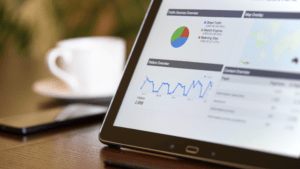Today’s non-profit organizations have much at their disposal to connect and engage with supporters. Social media efforts, specialized events, crowdfunding … it’s never been easier to stay in touch with dedicated volunteers and financial donors. And yet, many non-profits aren’t leveraging one of the most tried-and-true methods of communication: an effective and well-planned email campaign.

Indeed, email is being cast aside more and more in favor of other forms linking donors to the causes they want to support. But, as non-profit strategist John Haydon shows, it’s this form of communication—when used properly—that can garner tremendous monetary gains. In fact, he notes that email has the highest return on investment of any marketing channel—incredibly $40 for every $1 invested.
But he also stresses that it’s important to be smart about your approach to an email campaign: using the same mass message across all contacts won’t get your very far, nor will relating a fuzzy story about what your want to achieve or having an overly complicated explanation of your end goals.
Here, Haydon gives five ways to truly optimize your email campaign and ensure your organization reaches that $40-$1 ROI—and perhaps even surpasses it.
- Keep your subject line short and sweet: according to fundraising software company Salsa between 28 and 39 characters is optimal. This will help ensure the recipient will actually open the email rather than send it directly to their trash bin. And be sure the subject line is compelling: it’s okay to impart a sense of urgency and let the donor know just how important their support is to your organization.
- Be personal in your greeting by using recipients first names. Salsa also reports that individualized emails get increased open rates upwards of 244 percent, and by making a personal connection to the email recipient you make them feel valued.
- Don’t let your organization’s story get in the way of its impact. Tell potential and current donors how they are making and can continue to make an impact. As Haydon says over and over, don’t try to “sell” your non-profit: rather, sell the vital and important difference your organization is having in the world.
- Value the individual relationship each supporter has with your group, and accomplish this by segmenting your email marketing list and donor database into categories: newsletter subscribers, volunteers, current donors (broken down by the average amount of money they give), new donors, interests etc. Then craft specific messages that speak directly to each of these bases.
- Consider offering incentives that make an immediate impact with recipients such as a dollar-for-dollar match on all donations or complimentary tickets to an exclusive event. This makes the email subscriber feel that their money is being well managed and spent wisely.


